Intel Core i9-13900K vs. Core i9-12900K: worth the upgrade?
Intel Raptor Lake is coming, and it’s coming soon. With several new processors on the way, it’s hard not to focus on the flagship, the Intel Core i9-13900K. Equipped with a seemingly endless number of cores, capable of hitting those ultra-high clock speeds, and socket-compatible with Alder Lake, it seems to check most of the boxes as far as the top-shelf CPUs are concerned.
On the other hand, the Core i9-13900K is likely to be more expensive than its predecessor, and that processor is still not cheap despite having been out for a while. Is getting a Core i9-13900K worth the splurge, or should you keep things more budget-friendly with the 12th-generation CPU? Below, we’ll compare the two Intel flagships and help you choose a winner.
Pricing and availability
Ever since it was released in the last quarter of 2021, the Intel Core i9-12900K has maintained a price that’s close to its initial MSRP (recommended price). Once priced at $589, it still costs about the same on Amazon. It’s not cheap, and there are some AMD and Intel processors that offer better value, but it is what it is. These flagships are not meant to be cheap, anyway — they’re enthusiast-grade processors meant to deliver.
Despite rumors to the contrary, the Core i9-13900K is the same price as the Core i9-12900K — at least at launch, anyway. Given that the new CPU will become the de facto option around $600, we expect the Core i9-12900K to slowly drop in price over the coming months. That could make a big difference in which processor you buy, especially if you can score a deal on a last-gen part.
The Core i9-12900K is available at most retailers now, while the Core i9-13900K will arrive on October 20, 2022. It will likely sell out close to launch and remain out of stock for a couple of weeks. That said, we don’t suspect any major shortages of the processor, so expect pricing to return to normal shortly after launch.
Specs
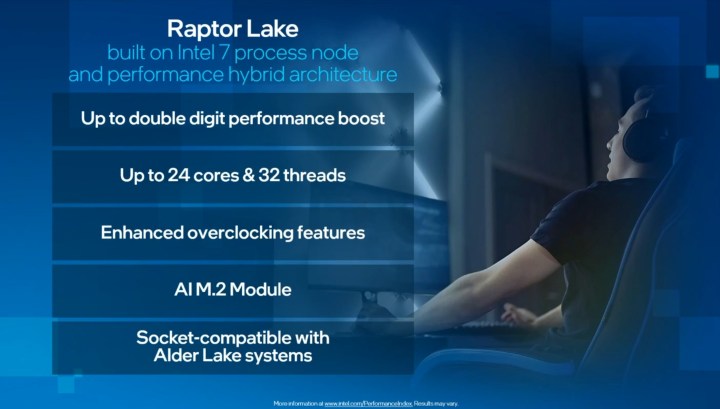
The Intel Core i9-13900K processor offers some very straightforward upgrades over the Core i9-12900K. With a higher core count, faster clock speeds, and a much larger cache, it has what it takes to deliver significantly better performance than the Alder Lake part. Let’s take a look at all the most important specs.
| Intel Core i9-13900K | Intel Core i9-12900K | |
| Cores | 24 (8P+16E) | 16 (8P+8E) |
| Threads | 32 | 24 |
| Base clock | 3.0 | 3.2GHz |
| Boost clock | 5.8Ghz | 5.2GHz |
| Max memory speed | DDR5: 5600MTps; DDR4: 3200MTps | DDR5: 4800MTps; DDR4: 3200MTps |
| TDP (base/turbo) | 125W/253W | 125W/241W |
| Intel Smart Cache (L3) | 36MB | 30MB |
| L2 Cache | 32MB | 14MB |
Architecture
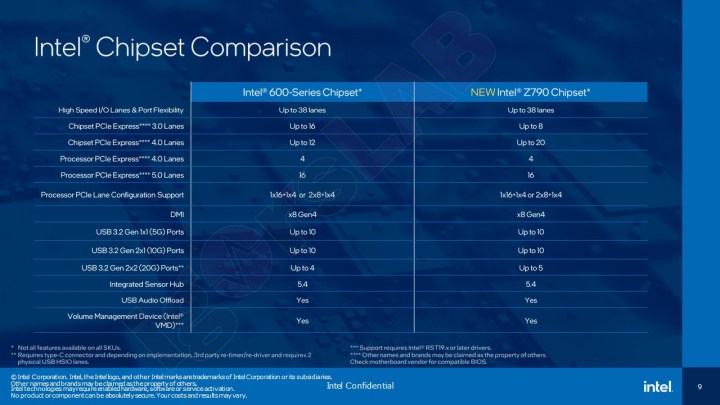
In terms of architecture, these two Intel processors are more siblings than they are cousins. They’re both compatible with the same LGA1700 socket and are, all in all, similar in many ways, although the 13th-gen CPU does bring a slew of upgrades. The real boost is not expected until the next generation, dubbed the Intel Meteor Lake, which will, in all likelihood, not be backward compatible the way Intel Raptor Lake is.
Intel decided to stick to the winning hybrid core technology, meaning that Raptor Lake continues what Alder Lake has started, and it features a mix of cores. Intel Core i9-13900K, therefore, features a mix of performance (P) cores and efficiency (E) cores. The E cores stayed mostly the same from the previous generation, but the P cores got a boost and are now referred to as “Raptor Cove” instead of Alder Lake’s “Golden Cove.”
Intel Core i9-13900K and Core i9-12900K were both made based on the same “Intel 7” 10nm process. Both CPUs simultaneously offer support for DDR5 and DDR4 RAM, although the new CPU has a higher cap on memory speed. In addition, both these generations grant access to PCIe Gen 5.0, and they can be used on the same motherboard, so if you currently own an Alder Lake CPU, upgrading will be seamless. However, Intel Raptor Lake will be accompanied by many new 700-series motherboards. This includes the high-end Z790, followed by the more affordable H770 and B760 models from various manufacturers, such as Asus, MSI, and Gigabyte.
As is the norm, the Core i9-13900K will also be available in a KF variant, which won’t include integrated graphics.
Performance
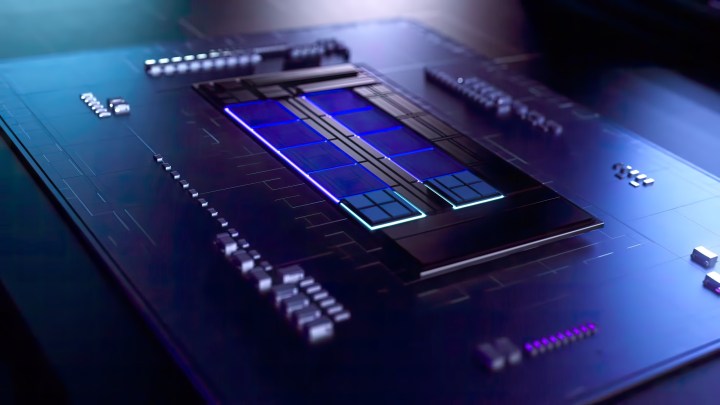
Although we’ve tested the Core i9-12900K extensively in our review of it, we still don’t know much about the performance of the Core i9-13900K. In order to paint a full picture of it, we’ll have to test it ourselves when we can get our hands on it. Until then, we can go by early leaked benchmarks, Intel’s own claims, and also the general expectations based on the differences in specs.
With the Core i9-13900K, Intel promises to deliver the “world’s best gaming experience,” complete with streaming and recording for content creators. No wonder — this is a high-end CPU, and in all likelihood, most gamers will stick to the Core i5-13600K or the Core i7-13700K instead of pushing for those extra frame rates at a much higher cost.
Intel also touts the CPU’s overclocking capabilities, and indeed, we’ve already seen a Raptor Lake CPU hitting the mythical 6.0GHz mark in leaked benchmarks. That kind of frequency would be hard to achieve for the Core i9-12900K with its maximum boost clock of 5.2GHz. It’s worth noting that the CPU that managed to reach 6GHz was not even the flagship — it was the Core i7-13700K, so undoubtedly, the Core i9-13900K will be able to reach it too. Raptor Lake has also made overclocking easier, with new per-core tuning visualizations and one-click overclocking built into the CPU.
Using liquid nitrogen for extreme cooling, Intel was able to push the P-cores on the Core i9-13900K beyond 8GHz. While not quite a world record, it’s a tremendous achievement that bodes well for the processor’s overclock ability.
In terms of raw performance, Intel itself promises to deliver a 15% increase in single-threaded tasks and a whopping 41% in multithreaded operations. This is, of course, in comparison to the Core i9-12900K. Intel has also shared some performance figures in gaming, comparing the two flagships in a variety of titles.
While the Raptor Lake part certainly wins in the majority of games, the gains are not tremendous. CPU-friendly titles, such as League of Legends or DOTA 2, see the biggest wins, with up to a 20% increase in frames per second (fps).
Intel has, of course, also presented performance figures for the Core i9-13900K in comparison to the last-gen AMD Ryzen 9 5950X. Unsurprisingly, the Intel CPU won by a landslide, beating AMD by as much as 107% in The Riftbreaker. Most of the wins hover around the 30% to 50% mark, though. However, AMD has its new Ryzen 7000 CPUs out, too, so that gap is about to close in a big way.
It will all come down to price
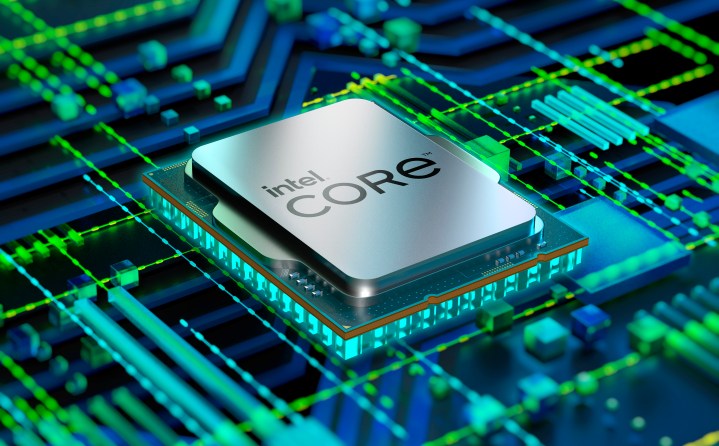
Can you hear the roar of the Raptor (Lake)? Of course, without having seen the processor in action firsthand, we can only speculate — but it makes perfect sense that the new 13th-gen Intel flagship will outperform its predecessor. While the two CPUs are close in just about everything that matters, Intel did pack the Core i9-13900K with some extra oomph to make it a more powerful CPU all around.
However, there’s also the question of price. Depending on how Intel prices the Core i9-13900K, the Core i9-12900K might remain a better option if you’re not hunting for the best performance available. If you are, there’s no denying that the new Core i9-13900K will make a better pick … if your wallet can handle it.
Either way, we’ll have to wait until we can test these new 13th-gen chips ourselves until we can make a final verdict.
Editors’ Recommendations
Intel Raptor Lake is coming, and it’s coming soon. With several new processors on the way, it’s hard not to focus on the flagship, the Intel Core i9-13900K. Equipped with a seemingly endless number of cores, capable of hitting those ultra-high clock speeds, and socket-compatible with Alder Lake, it seems to check most of the boxes as far as the top-shelf CPUs are concerned.
On the other hand, the Core i9-13900K is likely to be more expensive than its predecessor, and that processor is still not cheap despite having been out for a while. Is getting a Core i9-13900K worth the splurge, or should you keep things more budget-friendly with the 12th-generation CPU? Below, we’ll compare the two Intel flagships and help you choose a winner.
Pricing and availability
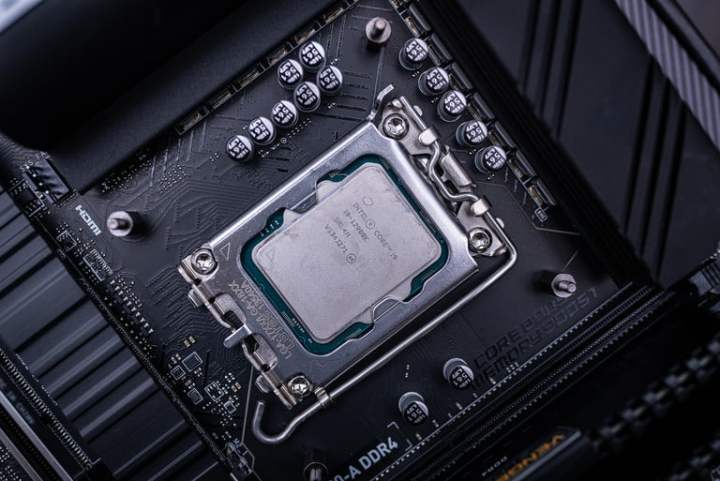
Ever since it was released in the last quarter of 2021, the Intel Core i9-12900K has maintained a price that’s close to its initial MSRP (recommended price). Once priced at $589, it still costs about the same on Amazon. It’s not cheap, and there are some AMD and Intel processors that offer better value, but it is what it is. These flagships are not meant to be cheap, anyway — they’re enthusiast-grade processors meant to deliver.
Despite rumors to the contrary, the Core i9-13900K is the same price as the Core i9-12900K — at least at launch, anyway. Given that the new CPU will become the de facto option around $600, we expect the Core i9-12900K to slowly drop in price over the coming months. That could make a big difference in which processor you buy, especially if you can score a deal on a last-gen part.
The Core i9-12900K is available at most retailers now, while the Core i9-13900K will arrive on October 20, 2022. It will likely sell out close to launch and remain out of stock for a couple of weeks. That said, we don’t suspect any major shortages of the processor, so expect pricing to return to normal shortly after launch.
Specs

The Intel Core i9-13900K processor offers some very straightforward upgrades over the Core i9-12900K. With a higher core count, faster clock speeds, and a much larger cache, it has what it takes to deliver significantly better performance than the Alder Lake part. Let’s take a look at all the most important specs.
| Intel Core i9-13900K | Intel Core i9-12900K | |
| Cores | 24 (8P+16E) | 16 (8P+8E) |
| Threads | 32 | 24 |
| Base clock | 3.0 | 3.2GHz |
| Boost clock | 5.8Ghz | 5.2GHz |
| Max memory speed | DDR5: 5600MTps; DDR4: 3200MTps | DDR5: 4800MTps; DDR4: 3200MTps |
| TDP (base/turbo) | 125W/253W | 125W/241W |
| Intel Smart Cache (L3) | 36MB | 30MB |
| L2 Cache | 32MB | 14MB |
Architecture

In terms of architecture, these two Intel processors are more siblings than they are cousins. They’re both compatible with the same LGA1700 socket and are, all in all, similar in many ways, although the 13th-gen CPU does bring a slew of upgrades. The real boost is not expected until the next generation, dubbed the Intel Meteor Lake, which will, in all likelihood, not be backward compatible the way Intel Raptor Lake is.
Intel decided to stick to the winning hybrid core technology, meaning that Raptor Lake continues what Alder Lake has started, and it features a mix of cores. Intel Core i9-13900K, therefore, features a mix of performance (P) cores and efficiency (E) cores. The E cores stayed mostly the same from the previous generation, but the P cores got a boost and are now referred to as “Raptor Cove” instead of Alder Lake’s “Golden Cove.”
Intel Core i9-13900K and Core i9-12900K were both made based on the same “Intel 7” 10nm process. Both CPUs simultaneously offer support for DDR5 and DDR4 RAM, although the new CPU has a higher cap on memory speed. In addition, both these generations grant access to PCIe Gen 5.0, and they can be used on the same motherboard, so if you currently own an Alder Lake CPU, upgrading will be seamless. However, Intel Raptor Lake will be accompanied by many new 700-series motherboards. This includes the high-end Z790, followed by the more affordable H770 and B760 models from various manufacturers, such as Asus, MSI, and Gigabyte.
As is the norm, the Core i9-13900K will also be available in a KF variant, which won’t include integrated graphics.
Performance

Although we’ve tested the Core i9-12900K extensively in our review of it, we still don’t know much about the performance of the Core i9-13900K. In order to paint a full picture of it, we’ll have to test it ourselves when we can get our hands on it. Until then, we can go by early leaked benchmarks, Intel’s own claims, and also the general expectations based on the differences in specs.
With the Core i9-13900K, Intel promises to deliver the “world’s best gaming experience,” complete with streaming and recording for content creators. No wonder — this is a high-end CPU, and in all likelihood, most gamers will stick to the Core i5-13600K or the Core i7-13700K instead of pushing for those extra frame rates at a much higher cost.
Intel also touts the CPU’s overclocking capabilities, and indeed, we’ve already seen a Raptor Lake CPU hitting the mythical 6.0GHz mark in leaked benchmarks. That kind of frequency would be hard to achieve for the Core i9-12900K with its maximum boost clock of 5.2GHz. It’s worth noting that the CPU that managed to reach 6GHz was not even the flagship — it was the Core i7-13700K, so undoubtedly, the Core i9-13900K will be able to reach it too. Raptor Lake has also made overclocking easier, with new per-core tuning visualizations and one-click overclocking built into the CPU.
Using liquid nitrogen for extreme cooling, Intel was able to push the P-cores on the Core i9-13900K beyond 8GHz. While not quite a world record, it’s a tremendous achievement that bodes well for the processor’s overclock ability.
In terms of raw performance, Intel itself promises to deliver a 15% increase in single-threaded tasks and a whopping 41% in multithreaded operations. This is, of course, in comparison to the Core i9-12900K. Intel has also shared some performance figures in gaming, comparing the two flagships in a variety of titles.
While the Raptor Lake part certainly wins in the majority of games, the gains are not tremendous. CPU-friendly titles, such as League of Legends or DOTA 2, see the biggest wins, with up to a 20% increase in frames per second (fps).
Intel has, of course, also presented performance figures for the Core i9-13900K in comparison to the last-gen AMD Ryzen 9 5950X. Unsurprisingly, the Intel CPU won by a landslide, beating AMD by as much as 107% in The Riftbreaker. Most of the wins hover around the 30% to 50% mark, though. However, AMD has its new Ryzen 7000 CPUs out, too, so that gap is about to close in a big way.
It will all come down to price

Can you hear the roar of the Raptor (Lake)? Of course, without having seen the processor in action firsthand, we can only speculate — but it makes perfect sense that the new 13th-gen Intel flagship will outperform its predecessor. While the two CPUs are close in just about everything that matters, Intel did pack the Core i9-13900K with some extra oomph to make it a more powerful CPU all around.
However, there’s also the question of price. Depending on how Intel prices the Core i9-13900K, the Core i9-12900K might remain a better option if you’re not hunting for the best performance available. If you are, there’s no denying that the new Core i9-13900K will make a better pick … if your wallet can handle it.
Either way, we’ll have to wait until we can test these new 13th-gen chips ourselves until we can make a final verdict.
Editors’ Recommendations
